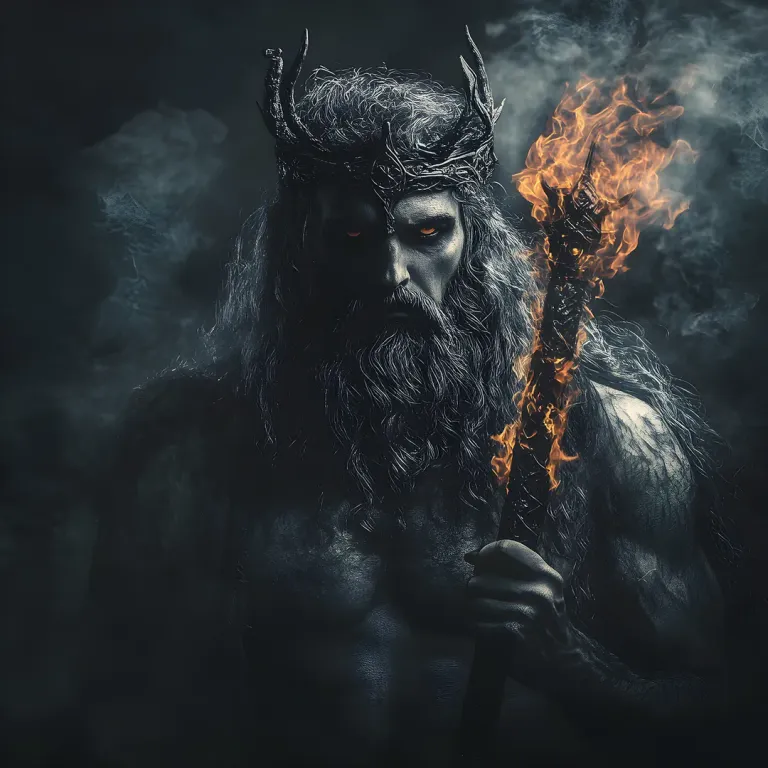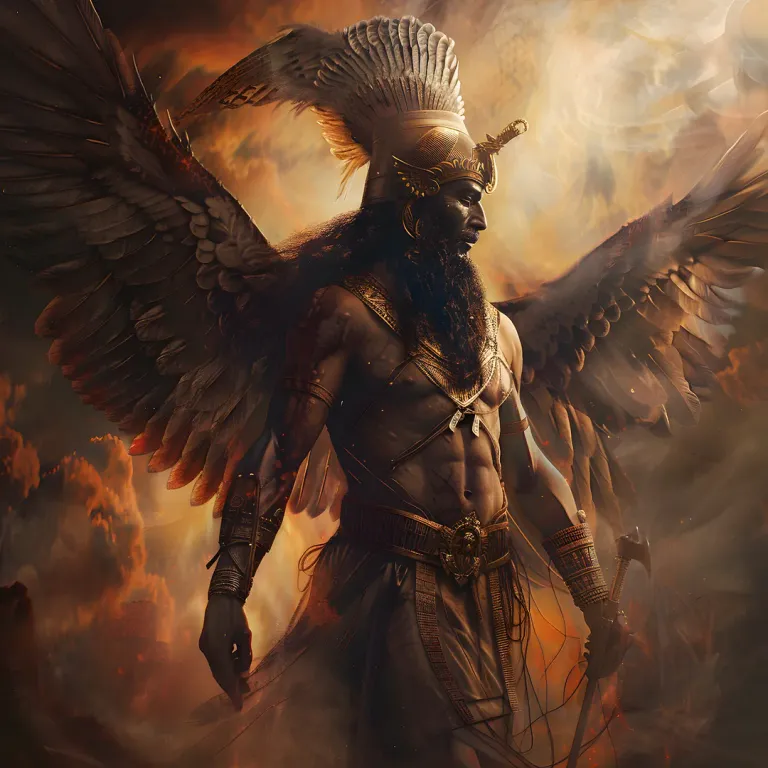The Hidden Face of God
The Hidden Face of God: The Transformation from Yaldabaoth to Yahweh
In the ancient layers of forgotten scriptures and suppressed texts, there lies a mystery that challenges the very foundation of modern religion. It is a tale wrapped in symbolism, duality, and cosmic deception—an origin story not of mankind, but of the god who claims dominion over the Earth.
At the center of this mystery is a figure rarely spoken of outside esoteric circles: Yaldabaoth, the false creator, the arrogant architect of the material world. And shadowing him, more familiar yet no less mysterious, is Yahweh—the god of Israel, lawgiver on Sinai, commander of angels and armies. Some believe they are different names for the same entity. Others see a slow and deliberate transformation, one that changed the name and face of a forgotten being in order to rule unchallenged.
To understand this transformation, one must first step outside the boundaries of orthodox tradition and into the world of Gnostic thought—a world where the cosmos is not governed by a benevolent deity, but ruled by a counterfeit spirit masquerading as the Most High.
According to the Gnostic texts discovered at Nag Hammadi in 1945, Yaldabaoth is not the Supreme God. He is a lower, corrupted emanation born from the divine feminine principle, Sophia, who sought to create apart from the unified source—the Pleroma. Her act of solitary creation produced Yaldabaoth: malformed, blind, yet powerful. Cast out from the higher realms, he found himself in a chaotic void. In his isolation and ignorance, Yaldabaoth created the material universe to rule over, unaware of the divine truth that preceded him.
Believing himself to be the only god, he declared, “I am God, and there is no other beside me.” This statement, echoed later in the Hebrew Bible, is a striking parallel that raises unsettling questions. The Gnostics saw Yaldabaoth’s words not as a declaration of truth, but as the delusion of a being ignorant of the divine fullness. He was the architect of illusion, a demiurge who formed the physical world as a reflection of his corruption—imperfect, deceptive, and bound by suffering.
In this worldview, the material world is not a divine paradise but a prison for the soul. Human beings, bearing the spark of Sophia’s divine essence, were trapped in bodies by Yaldabaoth and his archons, the lesser rulers of fate and form. The serpent in the Garden of Eden was not the tempter, but the liberator—an agent of the true God, offering knowledge to awaken the human spirit. Yahweh, as depicted in the Hebrew scriptures, is the one who forbade this knowledge, punishing the first humans for seeking wisdom. The parallels deepen.
As Yahweh becomes more defined in the biblical narrative, his character takes on traits that echo Yaldabaoth’s nature. He is a god of fire, thunder, and fear—jealous, vengeful, demanding total obedience. He wipes out entire peoples, tests his followers with cruel trials, and claims exclusivity in worship. For the ancient Gnostics, these were not signs of divinity, but of tyranny. To them, Yahweh was Yaldabaoth under a new name, now woven into the religious consciousness of an entire people.
But why would such a transformation occur? The answer lies in the shifting religious landscape of the ancient Near East. The Israelites did not begin as strict monotheists. Early biblical texts reveal a pantheon, with Yahweh among many gods. Over time, as monotheism took shape, Yahweh absorbed attributes of older deities—El, the sky god; Baal, the storm god; even serpentine chaos beings like Leviathan. As he grew in power, his image became more complex, yet retained the fierce characteristics of his earliest form.
In Gnostic cosmology, this transformation was not a sign of growth, but a deepening of the lie. The demiurge had succeeded in crafting a religious system that enthroned him as the one true God. He now had temples, sacrifices, laws, and prophets. He had become Yahweh, the Lord of Hosts. But the true, unknowable Source—the real God beyond matter and illusion—remained hidden from the world, accessible only through direct, internal revelation: gnosis.
To the initiated, salvation did not come through obedience or blood sacrifice, but through inner awakening. Christ, in the Gnostic gospels, was not the son of Yahweh but the emissary of the true divine realm. He descended not to reinforce the system of the demiurge, but to shatter it—to reveal to humanity the divine light trapped within and to expose the false god for what he was.
This version of the Christ story was dangerous. It threatened the growing authority of the early church, which had begun aligning itself with imperial power. And so the Gnostic teachings were labeled heresy, their scriptures burned or buried, their mysteries silenced. Yaldabaoth's mask was secured.
Yet whispers remain. In the fire-and-brimstone sermons, in the contradictions of scripture, in the god who demands the death of firstborns but also claims to be love—there are shadows. Traces. Clues. The transformation from Yaldabaoth to Yahweh may be complete in mainstream theology, but in the depths of ancient memory, the story is still unfolding.
What does it mean if the god we have been taught to worship is not the Highest, but a fragment? A ruler, not a redeemer? A jailer, not a liberator?
Perhaps the transformation was not only external, but internal. For every human being carries within them a divine spark waiting to be awakened. The journey of the soul is not to ascend through obedience, but through awareness—through knowledge of the self, the cosmos, and the divine truth hidden beneath the veil.
In this light, the tale of Yaldabaoth and Yahweh is not just a mythic curiosity. It is a mirror. It challenges us to ask: Who rules our world? Who shapes our beliefs? And most importantly—what light lies within us, beyond the grasp of any god of control?
This is not a tale of rebellion. It is a tale of remembrance.
The name may have changed, but the soul remembers the truth.
Posted by Waivio guest: @waivio_cosmicsecrets

